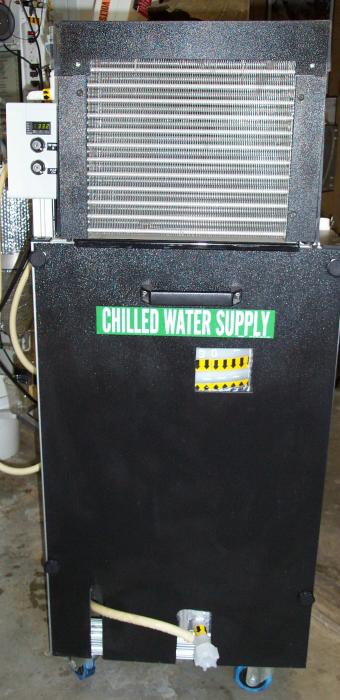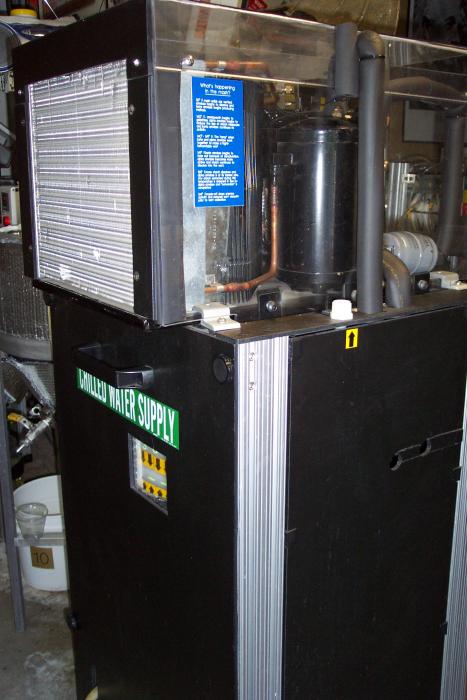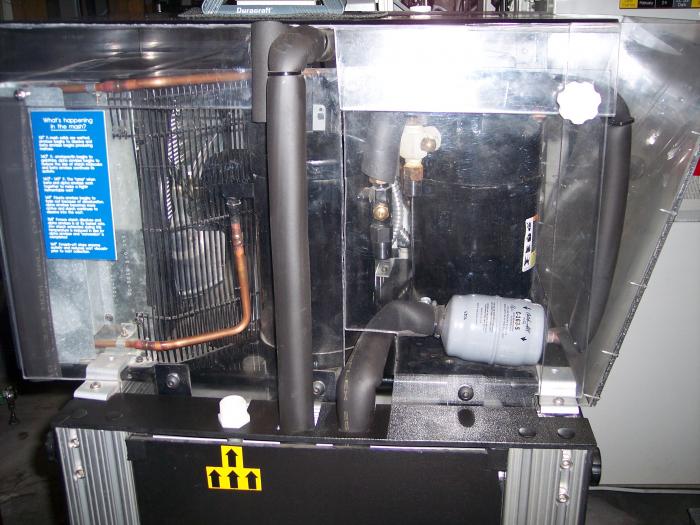Breadontap
Well-Known Member
- Joined
- Apr 15, 2014
- Messages
- 90
- Reaction score
- 8
So I have been looking into diy glycol chillers. I have also been using a 1/4 bbl pony keg for fermenting 5 gallon batches. I'm looking at getting a 1/2 bbl keg for 10 gallon batches. The issue is the space consumed with the Sanke fermenters. My current 1/4 bbl doesn't fit in my DIY ferm chamber made from a gifted mini fridge.
So this bring us to the internal coil. I've seen the DIY jacketed glycol fermenter from BYO and I'm glad a fellow Okie has the skill, effort, and resources to make that build. I on the other hand am less skilled and motivated to make such a system. I tested the hypothesis if twisting copper tubing to be able to fit inside a Sanke keg without having any soldered or compression fitting joints.
If you google "bending copper tubing", you will see a fella that fills his tubing with salt then bends a fairly sharp radius coil. I have recently upgraded from a immersion chiller to a CFC. I thought I would borrow a few feet and give it a try.
It actually worked! I filled the tubing best I could, there was some moisture that created a small void and allowed a slight kink but it still allows fluid to flow smoothly.
View attachment 195459
View attachment 195460
How did I do it you might ask. I used 3/8" copper tubing. Fill the tube with salt. Vibrate, shake, whatever to completely fill the tube. Crimp the ends then use a bar to make the initial bend. I used the spear from a Sanke. FYI, if you use the spear you diameter of the U bend will be just a little too big to fit through the Sanke mouth. Once the bend is made you have two pieces of copper pointing up at you. Just twist the tubing around each other until you have a long enough twist to reach the bottom of the Sanke.
I have yet to actually perform the entire build for a couple of reasons. I don't have a 1/2 bbl keg to ferment in, and I don't have a glycol chiller.
The plan is to do like many and use a oversized undrilled bung. Drill an inlet, outlet and hole for airlock. If there is room for a thermowell I will add that as well. I don't think there will be enough room for all of them.
In the end there will be a internal seamless chilling coil that will fit inside the Sanke without modifying the Keg. This should allow for the greatest possible efficiency for cooling and much cheaper than jacketing. I believe 6-8' if copper tubing will do it. Maybe 10'. If anyone beats me to this build please update the thread.
Sent from my iPhone using Home Brew
So this bring us to the internal coil. I've seen the DIY jacketed glycol fermenter from BYO and I'm glad a fellow Okie has the skill, effort, and resources to make that build. I on the other hand am less skilled and motivated to make such a system. I tested the hypothesis if twisting copper tubing to be able to fit inside a Sanke keg without having any soldered or compression fitting joints.
If you google "bending copper tubing", you will see a fella that fills his tubing with salt then bends a fairly sharp radius coil. I have recently upgraded from a immersion chiller to a CFC. I thought I would borrow a few feet and give it a try.
It actually worked! I filled the tubing best I could, there was some moisture that created a small void and allowed a slight kink but it still allows fluid to flow smoothly.
View attachment 195459
View attachment 195460
How did I do it you might ask. I used 3/8" copper tubing. Fill the tube with salt. Vibrate, shake, whatever to completely fill the tube. Crimp the ends then use a bar to make the initial bend. I used the spear from a Sanke. FYI, if you use the spear you diameter of the U bend will be just a little too big to fit through the Sanke mouth. Once the bend is made you have two pieces of copper pointing up at you. Just twist the tubing around each other until you have a long enough twist to reach the bottom of the Sanke.
I have yet to actually perform the entire build for a couple of reasons. I don't have a 1/2 bbl keg to ferment in, and I don't have a glycol chiller.
The plan is to do like many and use a oversized undrilled bung. Drill an inlet, outlet and hole for airlock. If there is room for a thermowell I will add that as well. I don't think there will be enough room for all of them.
In the end there will be a internal seamless chilling coil that will fit inside the Sanke without modifying the Keg. This should allow for the greatest possible efficiency for cooling and much cheaper than jacketing. I believe 6-8' if copper tubing will do it. Maybe 10'. If anyone beats me to this build please update the thread.
Sent from my iPhone using Home Brew






























![Craft A Brew - Safale BE-256 Yeast - Fermentis - Belgian Ale Dry Yeast - For Belgian & Strong Ales - Ingredients for Home Brewing - Beer Making Supplies - [3 Pack]](https://m.media-amazon.com/images/I/51bcKEwQmWL._SL500_.jpg)













